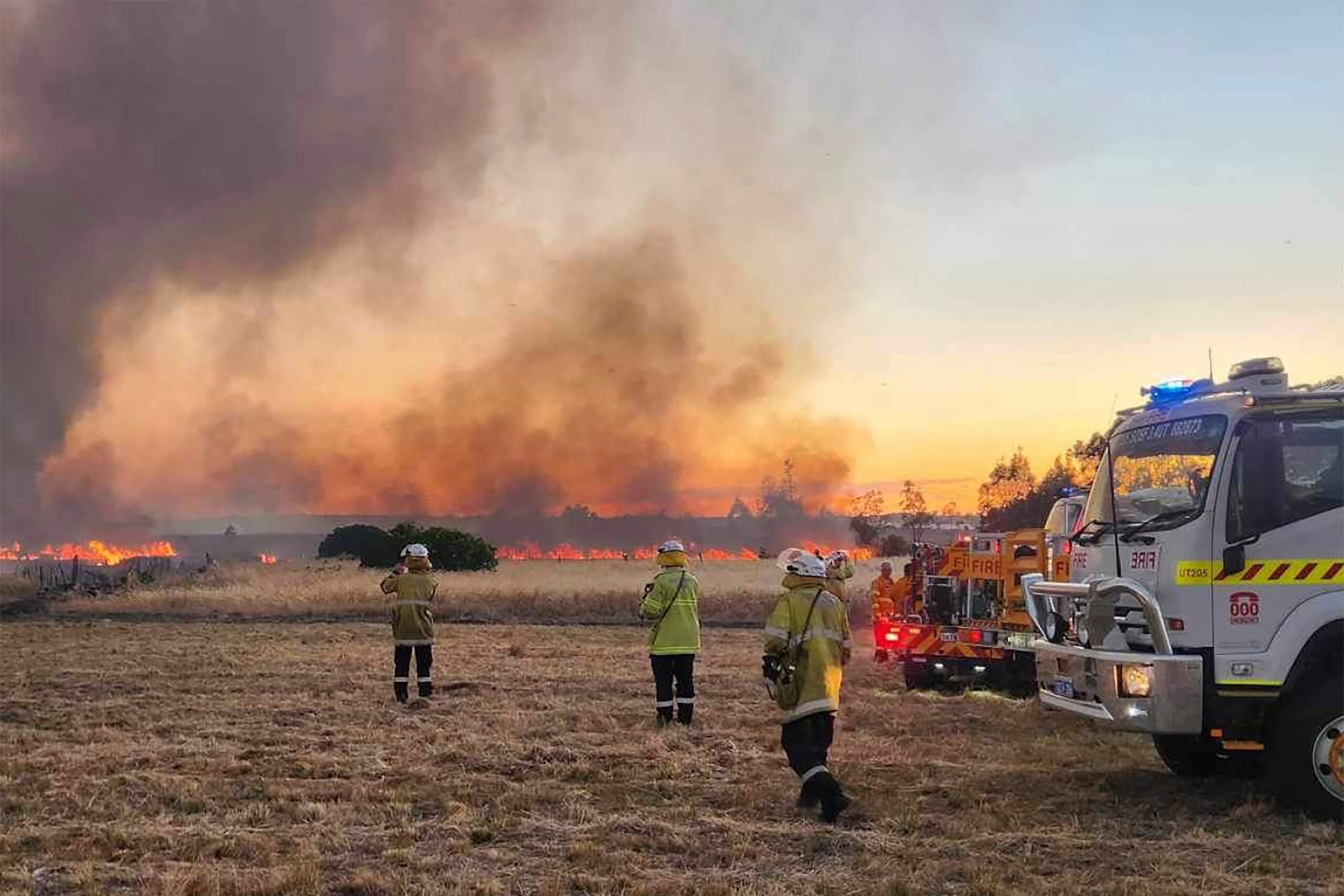Nearly 1.5 million people living along the coast may be at risk from rising sea levels by 2050, Australia’s first national climate risk assessment warns.
In that same time, the National Climate Risk Assessment says, deaths from extreme heat in Sydney will likely increase four times if global temperatures keep rising.
The government says that every community will face worsening climate hazards and that decisions taken this decade will shape how dangerous Australia’s future becomes.
“Australians are already living with the consequences of climate change today,” climate change minister Chris Bowen said. “But it is clear every degree of warming we prevent now will help future generations avoid the worst impacts in years to come.”
The assessment models the impacts of rising temperatures under three pathways – above 1.5C, above 2C, above 3C – and finds risks that are “cascading, compounding and concurrent” across health, infrastructure, economy, and ecosystems.
In a world where average temperatures have risen by 3C since the pre-industrial era, heat-related deaths could climb by 440 per cent in Sydney and more than 420 per cent in Darwin, with large jumps flagged for Melbourne, Perth and other cities as well.
Direct costs from floods, bushfires, storms, and cyclones could reach A$40bn (£19.6bn) per year by 2050 even on a lower-warming path.
“This will put pressure on health, critical infrastructure, natural species and ecosystems, and primary industries,” the report warns. This scenario will also pose extra challenges for emergency responders.
By mid-century, about 1.5 million coastal residents could end up living in high-risk areas. And by 2090, that figure could exceed 3 million, with rising seas driving far more frequent inundation, erosion and damage to homes, roads and utilities.
The assessment highlights that warming across the Australian continent has already reached around 1.5C, pushing up the number and intensity of heatwaves on land and at sea.

Alongside the assessment report, the government published a national adaptation plan to coordinate work across federal, state and local authorities.
Ministers say the findings will inform a new 2035 emissions target due to be set this week.
The Climate Council chief executive, Amanda McKenzie, described the report’s findings as “terrifying”, while the Greens leader, Larissa Waters, said they were “chilling”.
Experts said rapid cuts to climate pollution in Australia, one of the world’s biggest polluters per capita, was key to dealing with the challenges.
Professor Andy Pitman of University of New South Wales called the assessment “a robust piece of work” that should guide risk planning,
Andrew Gissing, chief executive of Natural Hazards Research Australia, said climate hazards would grow “more frequent, more complex, more intense, more unpredictable, and more difficult to manage”, placing growing strain on emergency services and communities.
Professor Matt King, director of the Australian Centre for Excellence in Antarctic Science, described the projection that 1.5 million people could be affected by rising seas by 2050 “shocking”.
“Much of this change will come from Antarctica,” he said, “there is still much to do to understand the risk we all face.”
Dr Chen Zhao of the University of Tasmania – who contributed to the report’s sea-level sections – said planning must also account for uncertainty in how Antarctica would respond to warming oceans.
“Parts of East Antarctica may become vulnerable sooner than expected as ocean heat and subglacial meltwater accelerate ice loss,” she said.
“Investing in this science is not optional – it underpins the resilience of our coastal communities.”
Health researchers warned that the human impacts of the climate crisis extended beyond headline death figures.
The assessment also points to wide economic impacts. Productivity losses from extreme heat could reach A$135-423bn (£66-207bn) by 2063, with agriculture, construction, manufacturing and mining among the hardest-hit sectors.
Property values may face hundreds of billions in cumulative losses over coming decades as exposure to coastal hazards grows, according to the summary analysis of the assessment.
Dr Laura Downey of The George Institute said women faced distinct vulnerabilities, including risks to maternal and reproductive health, rising unpaid care burdens and exclusion from decision-making, and called for sex-disaggregated data to guide targeted interventions.
Associate professor Naomi Godden said that without deliberate climate-justice measures, “existing inequalities will worsen”, particularly for Aboriginal and Torres Strait Islander peoples, people on low incomes, older Australians, and those in remote areas.
For communities already facing back-to-back disasters, the message was that adaptation and mitigation must advance together, said Dr Lucille Chapuis of La Trobe University.
“No Australian community is immune,” Dr Chapuis said. “Strategies to reduce these risks already exist. By acting now – through ambitious emissions reductions, resilient infrastructure and stronger community planning – we can limit the most severe impacts. The cost of doing nothing will far exceed the cost of action.”
